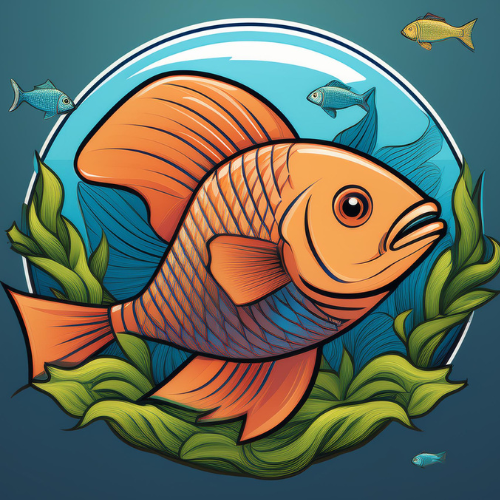fish diversity
Fish That Starts With B
The vast and diverse world of fish offers a captivating array of species, each with its unique characteristics and adaptations. From the tiny, shimmering minnows to the colossal, majestic whales, these aquatic creatures play crucial roles in maintaining the balance of our planet’s ecosystems. Amidst this incredible diversity, a fascinating subset of fish stands out: those whose names begin with the letter “B.”
This essay of fishtankmagic.com will delve into the captivating realm of “fish that start with B,” exploring their remarkable diversity, fascinating adaptations, and the vital roles they play in our oceans, rivers, and lakes.
Fish That Starts With B
The letter “B” serves as a gateway to a vibrant and varied collection of fish species. From the familiar to the exotic, these aquatic inhabitants showcase the remarkable adaptability and evolution that have shaped life in the water. Let’s embark on a journey to discover some of the most intriguing “fish that start with B”:
1. Bream
Bream, a common name for several species of fish belonging to the family Cyprinidae, are widely distributed throughout the world. These fish are characterized by their deep, laterally compressed bodies, with scales that can range from silver to golden in color. Bream are omnivores, feeding on a variety of aquatic plants, insects, and small invertebrates. They are popular targets for anglers, known for their fighting spirit and delicious taste.
2. Bass
Bass, belonging to the family Centrarchidae, are renowned for their sporting qualities and delicious flesh. These freshwater fish, found in lakes, rivers, and reservoirs across North America, are known for their aggressive feeding habits and powerful, streamlined bodies. Bass species, such as the largemouth bass and smallmouth bass, are highly prized by anglers, who enjoy the challenge of catching these elusive and hard-fighting fish.
3. Blackfish
Blackfish, also known as tautog, are a species of marine fish belonging to the family Labridae. Found along the Atlantic coast of North America, these fish are characterized by their robust, dark-colored bodies and powerful jaws. Blackfish are bottom feeders, primarily consuming crabs, lobsters, and other crustaceans. They are a popular target for anglers, known for their strong fighting abilities and delicious, white flesh.
4. Bluefish
Bluefish, belonging to the family Pomatomidae, are a highly migratory species found in coastal waters around the world. These fish are known for their aggressive feeding habits, often forming large schools that can decimate populations of smaller fish. Bluefish are characterized by their streamlined, torpedo-shaped bodies, with a distinctive blue-green coloration on their backs. They are a prized game fish, sought after for their powerful fighting abilities and delicious, oily flesh.
5. Butterfish
Butterfish, belonging to the family Stromateidae, are small, silvery fish found in coastal waters of the North Atlantic Ocean. They are known for their delicate, buttery flavor, which has earned them their name. Butterfish are pelagic fish, meaning they inhabit the open ocean, feeding on plankton and other small organisms. They are a popular food fish, often used in sushi and other dishes.
6. Barracuda
Barracuda, belonging to the family Sphyraenidae, are large, predatory fish found in tropical and subtropical waters around the world. These fish are characterized by their elongated, torpedo-shaped bodies, with sharp, pointed teeth. Barracuda are known for their speed and agility, making them formidable predators. They are a popular game fish, but caution should be exercised as some species can be aggressive and dangerous to humans.
7. Bowfin
Bowfin, belonging to the family Amiidae, are a unique and ancient group of fish found in freshwater habitats of North America. These fish are characterized by their elongated, cylindrical bodies, with a distinctive dorsal fin that extends almost the entire length of their back. Bowfin are opportunistic feeders, consuming a variety of fish, amphibians, insects, and even small mammals. They are known for their resilience and ability to survive in harsh conditions.
8. Burbot
Burbot, belonging to the family Lotidae, are a unique species of freshwater fish found in cold, deep waters of North America and Eurasia. These fish are characterized by their elongated, eel-like bodies, with a distinctive barbel (whisker) located beneath their chin. Burbot are bottom feeders, primarily consuming invertebrates and small fish. They are a popular target for anglers, known for their unusual appearance and fighting abilities.
9. Bigeye Tuna
Bigeye tuna, belonging to the family Scombridae, are a highly migratory species found in tropical and subtropical waters around the world. These fish are characterized by their large, prominent eyes, which give them their name. Bigeye tuna are apex predators, feeding on a variety of fish, squid, and other marine life. They are a commercially important species, prized for their delicious, oily flesh.
10. Bullhead
Bullhead, a common name for several species of catfish belonging to the family Ictaluridae, are found in freshwater habitats of North America and Europe. These fish are characterized by their stout, rounded bodies, with a distinctive flattened head and a pair of barbels (whiskers) located beneath their chin. Bullheads are bottom feeders, primarily consuming insects, worms, and other invertebrates. They are a popular target for anglers, known for their tenacious fighting abilities.
The Importance of “B” Fish
The “fish that start with B” are not just fascinating creatures; they play vital roles in the health and balance of our aquatic ecosystems. These species contribute to the food chain, regulate populations of other organisms, and help maintain the overall biodiversity of our oceans, rivers, and lakes.
1. Food Chain Dynamics
Many “B” fish, such as bass, bluefish, and barracuda, are apex predators, meaning they occupy the top of the food chain. They help control populations of smaller fish and invertebrates, preventing overgrazing and maintaining the balance of the ecosystem.
2. Habitat Maintenance
Some “B” fish, such as bream and bowfin, are omnivores, feeding on a variety of plants and animals. They play a role in dispersing seeds and nutrients, contributing to the health and diversity of aquatic habitats.
3. Economic Importance
Many “B” fish, such as bluefish, butterfish, and bigeye tuna, are commercially important species, providing food and livelihoods for people around the world. Their sustainable management is crucial for ensuring the long-term health of these fisheries.
4. Recreational Value
“B” fish, such as bass, blackfish, and barracuda, are popular targets for anglers, providing recreational opportunities and promoting conservation efforts. Anglers play a vital role in monitoring fish populations and advocating for sustainable fishing practices.
Conservation Challenges
Despite their importance, many “B” fish species face a variety of conservation challenges, including:
1. Overfishing
Overfishing, driven by increasing demand for fish products, can deplete populations of “B” fish, threatening their long-term survival. Sustainable fishing practices are essential for ensuring the health of these fisheries.
2. Habitat Loss and Degradation
Pollution, habitat destruction, and climate change are all contributing to the loss and degradation of aquatic habitats, impacting the populations of “B” fish. Protecting and restoring these habitats is crucial for their survival.
3. Invasive Species
The introduction of invasive species can disrupt the balance of aquatic ecosystems, competing with native “B” fish for resources and threatening their populations. Preventing the introduction and spread of invasive species is essential for maintaining biodiversity.
Conclusion
The world of “fish that start with B” is a fascinating and diverse realm, showcasing the remarkable adaptability and evolution of aquatic life. These species play vital roles in our oceans, rivers, and lakes, contributing to the food chain, maintaining habitat health, and providing economic and recreational benefits.
However, they face a variety of conservation challenges, including overfishing, habitat loss, and invasive species. By promoting sustainable fishing practices, protecting aquatic habitats, and preventing the spread of invasive species, we can ensure the continued existence and prosperity of these remarkable creatures for generations to come.












